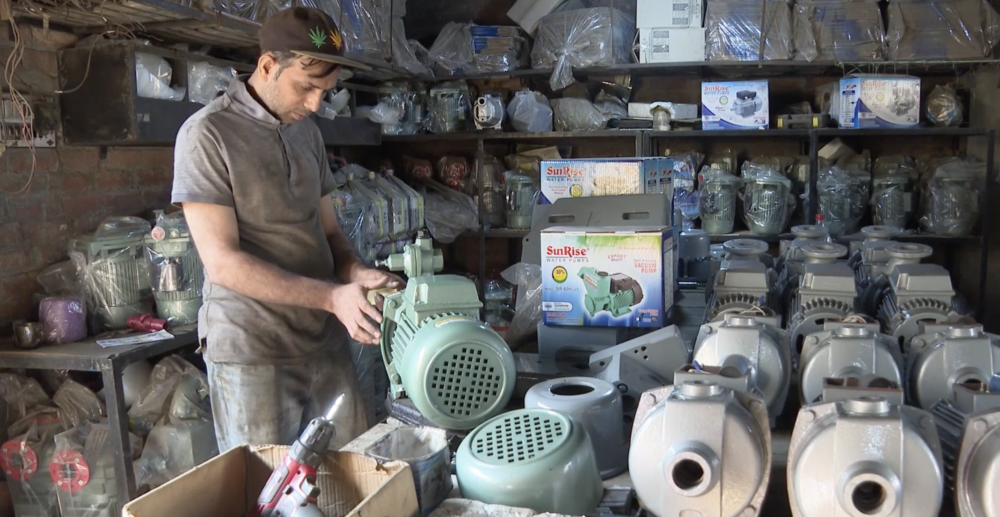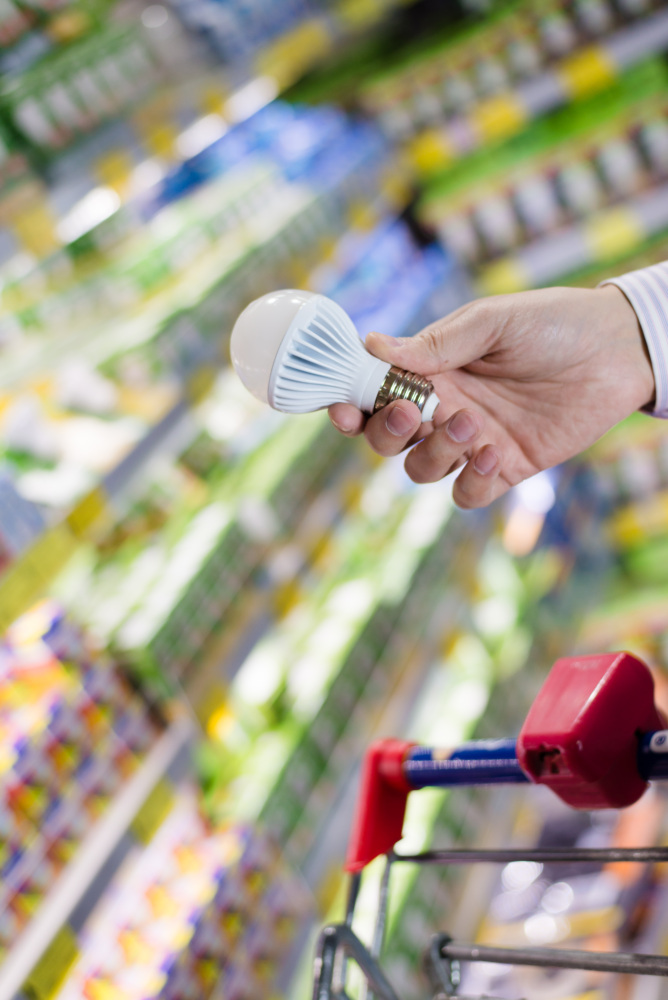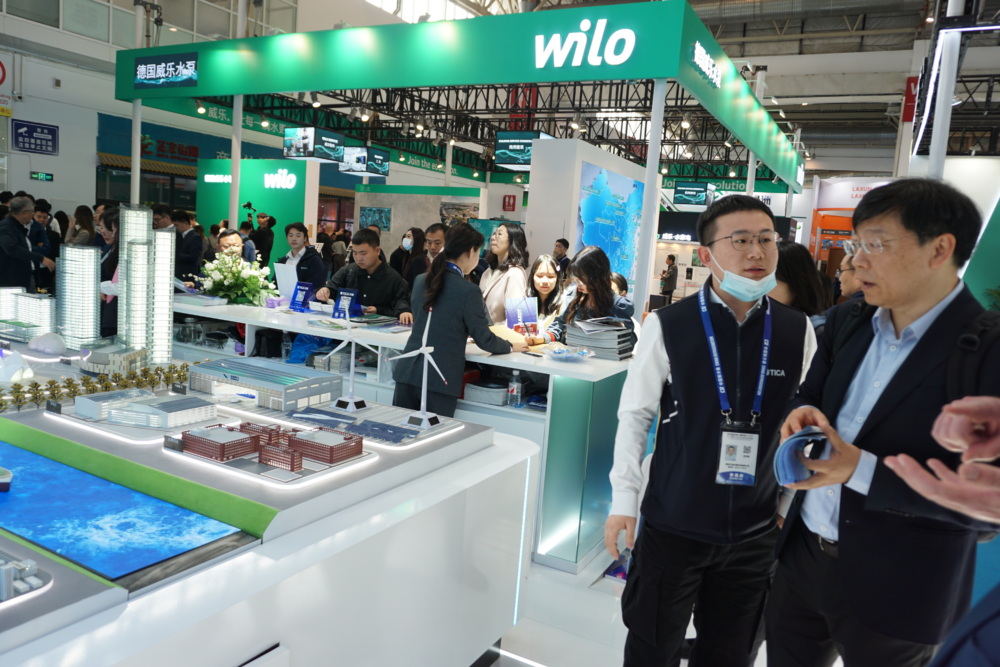Find CLASP at the International Conference on Energy Efficiency in Domestic Appliances and Lighting (EEDAL)
From 1-3 June, team members from our Washington D.C., Nairobi, Europe and New Delhi offices will present at the International Conference on Energy Efficiency in Domestic Appliances and Lighting (EEDAL) in Toulouse, France.
After more than two years, we are excited to attend in-person conferences to share insights into our global appliance energy efficiency work. From 1-3 June, team members from our Washington D.C., Nairobi, Europe and New Delhi offices will present at the International Conference on Energy Efficiency in Domestic Appliances and Lighting (EEDAL) in Toulouse, France.
Their presentations will cover the impact of television and lighting efficiency policy in India; Mepsy, a new tool to model energy and carbon reduction policies; product registration systems to support compliance of energy efficiency policies; opportunities for solar e-waste management in Sub-Saharan Africa; digital marketing campaigns for national energy labels; online energy label regulation in our changing digital markets, and more.
Find out more about their sessions below and reach out if you or one of your colleagues will be attending.
Wednesday June 1st, 2022
14:00 – 15:40
Session 1.a Policy 1
Evaluation of Television Efficiency Policy and Market Transformation in India
Kishore Kumar, CLASP India
Introducing Mepsy: The Appliance & Equipment Climate Impact Calculator
Angellah Wekongo, CLASP Kenya
Thursday June 2nd, 2022
10:45-12:25
Session 4.a Policy 4
Evaluation of Lighting Efficiency Policy and Market Transformation in India
Kishore Kumar, CLASP India
14:00-15:40
Session 5.a Policy 5
Role of Product Registration Systems in Supporting Compliance of Energy Efficiency Policies
Neha Dhingra, CLASP India
14:00-15:40
Session 5.b Appliances
Innovations for Sustainable Off-grid E-Waste Management Across Africa
Monica Wambui and Hannah Blair, CLASP Kenya
Friday June 3rd, 2022
8:30-10:10
Session 7.a Behaviour
Can digital advertising raise consumer awareness of energy efficient domestic appliances? A case study of the #KenyaEnergyLabel campaign
Hannah Blair and Angellah Wekongo, CLASP Kenya
10:45-12:25
Session 8.a Policy 6
Online Energy Labeling Regulation and Compliance in the Growing Online Market
Katriana Dubytz and Lina Kelpsaite, CLASP United States with Marie Baton (CLASP Consultant, Europe)
Abstracts
Evaluation of Television Efficiency Policy and Market Transformation in India
Kishore Kumar, CLASP India
Televisions play an essential role in the lives of millions of Indians as a source of information, entertainment and education. The television market in India has doubled over the last decade as the appliance has become commonplace across households, businesses and institutions, driven in part by increasing disposable income. The penetration of television ownership among households in the country is close to 66%, with sales of about 8.5 million units in Fiscal Year 2019-20.
Anticipating the rising sales of televisions and associated electricity demand, in 2009 India adopted an energy efficiency policy for televisions. The policy covers four technologies: cathode ray tube (CRT); liquid crystal display (LCD) with cold cathode fluorescent lamp (CCFL) backlit; LCD with light-emitting diode backlit (LCD-LED); and plasma. Since its adoption the television efficiency policy has been revised 3 times, raising minimum energy performance standards by 45% from initial levels and transforming the television market toward more efficient LED technologies. As of last year, India’s television efficiency policy had saved 20 Terawatt-hours of electricity and reduced carbon emissions by a cumulative 16.7 million tons.
This paper analyses market growth, technology evolution and market transformation resulting from the television energy efficiency policy, assesses potential policy revisions, and calculates potential efficiency gains through 2030.
Introducing Mepsy: The Appliance & Equipment Climate Impact Calculator
Angellah Wekongo, CLASP Kenya
Mepsy is CLASP’s free digital tool to model the impacts of energy and carbon reduction policies. Setting policies and achieving their benefits requires accurate, actionable data. Mepsy’s dynamic, user-friendly interface guides researchers and policymakers in identifying efficiency policy opportunities and analyzing their energy and carbon impacts. Pre-loaded with data from 162 countries, it supports analysis and prioritization for the most energy-intensive appliances and equipment— space heaters, air conditioners, refrigerators, fans, electric motors, televisions, and lighting—with more technologies being planned to be included in the tool. Efficiency standards often called MEPS (minimum energy performance standards) are a key building block in most national plans but the analytical tools used to support policy design have long been too difficult or expensive to use and customize. CLASP developed Mepsy to address these issues and make rigorous efficiency policy analysis accessible to the widest possible audience.
Mepsy accumulates appliances sales over lifetime to determine the number of appliances in use in a country, then incorporates the energy performance of locally-representative products, typical usage patterns, the climate-intensity of the national grid, and other variables to analyze the energy consumption, carbon dioxide emissions, and consumer energy costs associated with given policy scenarios.
Evaluation of Lighting Efficiency Policy and Market Transformation in India
Kishore Kumar, CLASP India
Electric lights are used by millions across India. The lighting market has increased exponentially over the years due to rapid population growth, more dwelling units, concept of smart lighting, and electrification at remote places. In Fiscal Year 2018-19, India manufactured about 1.4 billion lamps and tube-lights. The lighting segment consumes approximately 18% of total electricity use in the residential sector, resulting in 40 million tons of greenhouse gases (GHG) emissions.
Energy efficient lighting is one of the most cost-effective measures to address the impacts of growing electricity demand from the sector. Recognizing this, India adopted an energy efficiency policy for Tubular Fluorescent Lamps (TFL) in 2006. A decade later, an efficiency policy for LED bulbs was also announced to cover another new category of lamps as LEDs gaining a mainstream lighting market across industrial, commercial and residential installations. Since its adoption, 1.2 billion TFLs and 0.8 billion LED lamps have been star-labeled, thereby developing the market towards more energy-efficient lighting. India has experienced one of the most remarkable successes in market transformation for lighting as a result of efficiency policies and mass procurement exercises such as the UJALA scheme. Over the last 15 years, lighting efficiency policies have resulted in cumulative electricity savings of 18 Terawatt-hours and reduced GHG emissions by 15 million tons.
This paper analyses and discusses the trends in market growth, technology evolution, and market development as a result of lighting efficiency policies and further assess the potential for future policy revisions.
Role of Product Registration Systems in supporting compliance of energy efficiency policies
Neha Dhingra, CLASP India
Robust policy compliance and enforcement are key to realizing and safeguarding the benefits and the impact of appliance energy efficiency policies and market transformation initiatives. A product registration system is an integral tool to support policy compliance both at the national and regional level. It serves as an initial compliance gateway where manufacturers and suppliers register eligible products market entry, thereby accelerating implementation of the national and regional product efficiency policies. The product registration system also enables compliance authorities to share market intelligence on non-compliant and suspicious products, so they can strategically target their market surveillance activities and allocate resources for more effective compliance initiatives. The data captured within the tool can also be used to guide consumer and procurement purchasing decisions, and to track product trends and efficiency levels, which can inform new and future policy revisions.
A well-maintained and resourced tool can help transform the market towards more efficient appliances, build credibility of the energy efficiency program amongst consumers and provide a level playing field to the industry. The paper will cover qualitative analysis of regional product registration systems across the world with a specific focus on Economic Community of West African States (ECOWAS) regional product registration system. The paper will share key lessons and considerations for policymakers to develop a regional system ranging from political buy in, early agreements, consultative process amongst others. This paper will shed light on what goes into the development and operation of these tools; potential barriers and provide recommendations to develop and run a robust system. The comparative analysis of different systems will benefit countries developing a new product registration system or upgrading an existing one.
Innovations for Sustainable Off-grid E-Waste Management in Sub-Saharan Africa
Monica Wambui and Hannah Blair, CLASP Kenya with Rebecca Rhodes, GOGLA
Over the past decade, hundreds of millions of people in off- and weak grid environments have gained access to energy services thanks to the rapid expansion of off-grid solar products and services. Yet, the proliferation of solar e-waste poses a threat to the health and environment of the very people benefiting from off-grid energy services. Across sub-Saharan Africa, infrastructure for e-waste management is either nascent or undeveloped, leaving end-users with limited to no options. Most consumers deal with their end-of-life solar products by storing, dumping, burning or disposing of them in water bodies or latrines. As solar sales grow, a sustainable solution for e-waste management must be developed.
To stimulate innovations and collaboration for off-grid solar e-waste management, the Efficiency for Access Coalition launched the Global LEAP Awards Solar E-Waste Challenge in 2019. The Challenge selected eight companies – off-grid solar, recyclers and waste management companies from five sub-Saharan African countries- to test different aspects of e-waste collection and disposal, including recycling, repair and refurbishment, take-back and collection, awareness raising and incentives. This paper aims to share the good practice that emerged from these projects, with the spotlight on Kenya, as the largest off-grid solar market on the continent and the implementing country for half of the projects. The paper explores key interventions so that other companies can replicate the successes and avoid some of the pitfalls.
Can digital advertising raise consumer awareness of energy efficient domestic appliances? A case study of the #KenyaEnergyLabel campaign
Hannah Blair and Angellah Wekongo, CLASP Kenya
In an effort to promote high-quality, efficient domestic appliances to reduce consumers’ electricity costs, the Kenyan government developed and implemented a Kenya-specific energy label. Labeling is a critical component of effective appliance energy policy, encouraging consumers to make informed purchase choices and protecting them from poor quality, inefficient products. However, consumer awareness, understanding, and trust in an energy label are central to its success. In 2019, the Energy and Petroleum Regulatory Authority (EPRA) requested support from CLASP to design and run an energy label consumer awareness campaign.
CLASP designed and implemented the #KenyaEnergyLabel campaign focused on the refrigerator, freezer, air conditioner, and motor labels across Facebook, Twitter, Instagram, and Google Ads for 4 months. The central campaign message, More Stars, More Savings, spoke to the five-star guide that demonstrates how much energy, and correlated energy expenditures, can be saved by purchasing appliances with higher star ratings. The campaign reached more than 2,500,000 Kenyans through 80 paid ads. This paper will share insights into the digital implementation of the campaign, evaluating consumer interactions with the advertisements and social media pages. The #KenyaEnergyLabel offers a case study for governments, regulatory entities, and other energy label stakeholders, outlining a low-cost, awareness raising intervention to target consumers and encourage the uptake of energy-efficient appliances.
Online Energy Labeling Regulation and Compliance in the Growing Online Market
Katriana Dubytz and Lina Kelpsaite, CLASP United States with Juraj Krivošík and Marie Baton
Energy labels engage retailers in promoting efficiency and influence consumers to choose more efficient products. To achieve this goal, they need to be visible where the purchase choices are made. With the steady growth of e-commerce, it is becoming increasingly important to require the display of energy labels for appliances sold online. In 2015-2020, e-commerce annual growth for major appliances was estimated at 17% globally, which increased to over 25% in 2020 due to the Covid-19 pandemic. Appliance e-commerce growth is expected to continue as consumers gain confidence in online purchasing and e-commerce capabilities. Regulating and enforcing online efficiency labeling regulations is necessary to secure market transformation, emissions reduction, and energy conservation targets.
Only the European Union (EU), United States, and South Africa have mandatory online labeling requirements, while the e-commerce growth has been recorded in markets in Asia Pacific, North America, the Middle East, and Africa. The EU has one of the world’s most comprehensive energy standards and labelling programs, and since 2015, has required the display of energy labels for online appliance sales. This paper discusses the status of online regulations and enforcement mechanisms globally, including unique challenges such as regulating online retail platforms for third-party sellers. It uses the EU case study, informed by the quantitative and qualitative evaluation of labeling compliance on 72 online retail websites for 5 products in six member states to provide insights and recommendations for policy makers and experts seeking to develop and increase compliance with online labeling regulations.









